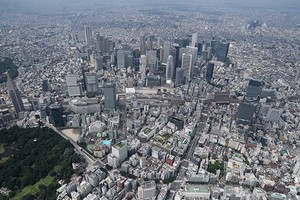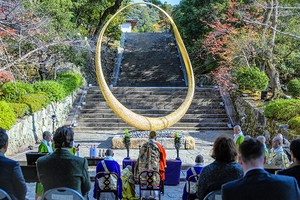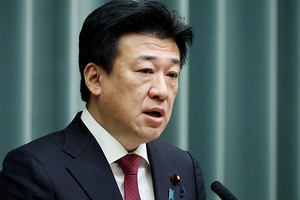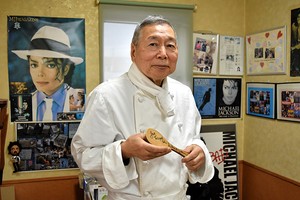By KAHO MATSUDA/ Staff Writer
April 13, 2025 at 07:00 JST
A malfunctioning video game console put a 10-year-old boy on a quest to develop a type of sand that can repel one of the most frightening invasive alien species to reach Japan.
It all began when fourth-grader Yoshiaki Shono was playing a game on his handheld console at a park near his home in Tokyo’s Shinagawa Ward in autumn 2023.
The machine suddenly froze.
When he brought it to a shop for repair, he learned that the problem was caused by fire ants that had entered the console through a gap.
Curious about ant behavior, Yoshiaki learned from the internet that fire ants have a habit of crawling inside machines for warmth.
Fire ants were first discovered in Japan in 2017, apparently after hitching rides in shipping containers.
The ants, which multiply rapidly, were also found at the Oi wharf near Yoshiaki’s home.
As its name suggests, the fire ant causes an intense burning pain with its sting. Its venom can also trigger anaphylactic shock.
Yoshiaki has suffered from breathing difficulties due to asthma and his severe allergies to house dust, ticks and other allergens.
Until fairly recently, he had avoided visiting his friends’ homes out of fear that food there could cause an allergic reaction.
The park near his home had been one place where he felt comfortable in, so he was scared that his playground would become infested with the venomous fire ants.
“I wanted to prevent their spread,” he recalled.
While looking into Japanese inventions with his father, Mikio, 41, Yoshiaki stumbled across photocatalysis technology.
Photocatalysts are substances that catalyze specific chemical reactions when hit by light.
Capable of decomposing viruses, dirt and other organic materials into water and carbon dioxide, photocatalysts have a wide range of applications, such as bacteria prevention and odor elimination.
Yoshiaki thought about how to use such characteristics to contain fire ants.
16 MONTHS OF TESTS
He searched for specialists and companies with knowledge about fire ant ecology and how to conduct experiments. He then contacted them after learning from his father how to write emails with honorific expressions.
One cooperating company sent Yoshiaki a photocatalyst in the form of a slurry containing oxidized titanium and tungsten oxide.
The boy mixed the slurry with coral sand, which is composed of calcium carbonate, the same mineral that makes up lime that is despised by ants.
Yoshiaki sprinkled the sand over soil to see if it would work. He compared the result with a control sample and performed other tests.
His aim was to disorient ants and prevent them from working in groups by breaking down trail pheromones secreted as markers for other members to bring food to the nest.
Yoshiaki mainly used Japanese pavement ants for his experiments because they are similar in nature to fire ants.
Through trial and error, the boy often experimented for hours in a park under the hot sun, using different types of photocatalyst and changing their concentrations.
After conducting 48 experiments over about 16 months, he finally confirmed that his sand can deter ants.
He named the sand “Kiraboshi no Suna” (sand of a twinkling star).
And he has applied for a patent for the anti-ant sand jointly with a company and a project supporter. He intends to put the sand into practical use within a few years.
Yoshiaki received the Tokyo governor's prize at an invention contest hosted by the metropolitan government for students in autumn last year.
“My family was also delighted about it, saying, ‘You did it,’” he recalled. “I was so happy.”
Yoshiaki said he wants to become a scientist largely because of his admiration for “Kamen Rider Build,” a superhero TV show whose protagonist is a genius who helps people with scientific knowledge.
“I get excited when I want to learn something I don’t know and feel clear-headed and convinced when I discover the answer,” Yoshiaki said. “I am amazed each time, thinking, ‘Oh, I didn’t know that.’”




















A peek through the music industry’s curtain at the producers who harnessed social media to help their idols go global.
A series based on diplomatic documents declassified by Japan’s Foreign Ministry
Here is a collection of first-hand accounts by “hibakusha” atomic bomb survivors.
Cooking experts, chefs and others involved in the field of food introduce their special recipes intertwined with their paths in life.
A series about Japanese-Americans and their memories of World War II